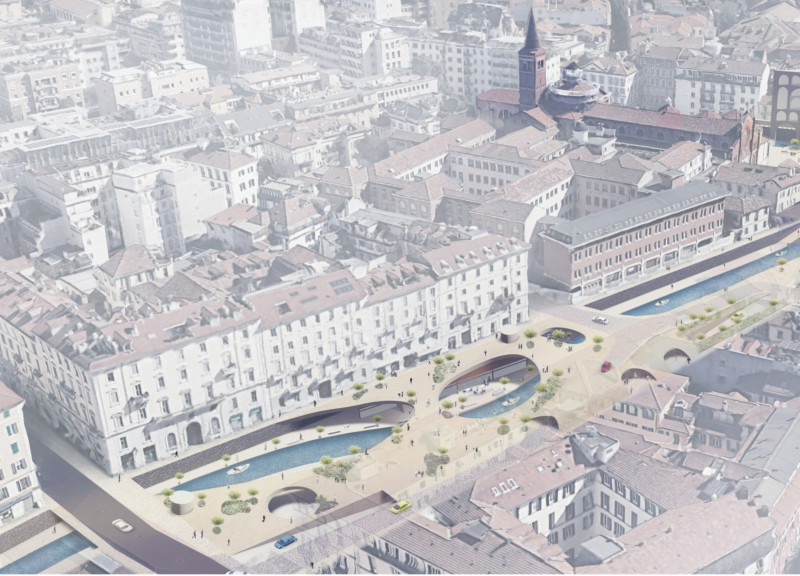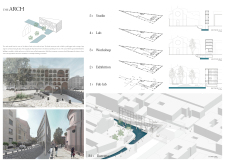5 key facts about this project
The revitalization of Milan's Navigli canals introduces a comprehensive approach that aims to bring back the importance of these historical waterways in a modern urban setting. Located at the center of Milan, the project seeks to transform the canals into lively public spaces that support social interaction and cultural activities. By blending aspects of fashion, architecture, art, and textiles, the design reflects the city's heritage while promoting contemporary urban renewal.
Conceptual Framework
This initiative reinterprets the Navigli canals as vital elements of Milan's identity, highlighting their past role as key transportation routes. The design emphasizes improving the flow of people and resources, promoting a circular economy through practices such as reuse and recycling. This integration positions the Navigli as a center for community engagement and a hub of cultural experiences.
Public Space Integration
A critical aspect of the design is the creation of various public spaces along the waterways. The landscape is designed in a way that encourages social interaction, allowing for a range of activities. These areas connect the urban environment with its historical context, creating a mix that fosters a sense of community and belonging.
Architectural Elements
Notable structures, including TEXTILE and ARCH, are placed strategically in the San Marco area. These features serve functional purposes while enhancing the overall aesthetics of the space. Their designs add character to the public areas, making them important points of interest within the revitalized canal landscape.
Materiality and Sustainability
Although specific materials are not detailed, the focus on sustainability suggests the use of local and recycled resources. This commitment highlights the desire to balance environmental responsibility with practical design. Using sustainable practices reinforces the project’s goal of addressing environmental and social issues while maintaining functionality.
The landscape is further enhanced by pathways that weave alongside the canal, bordered by greenery. These inviting routes encourage exploration and movement through the revitalized areas.





















































